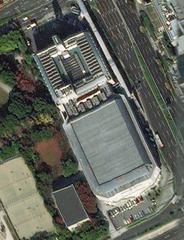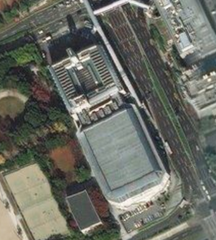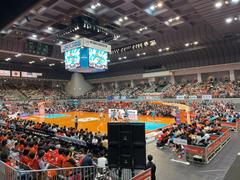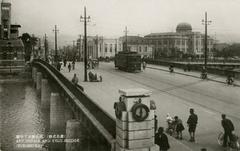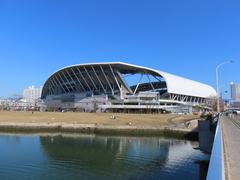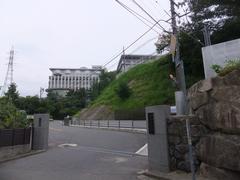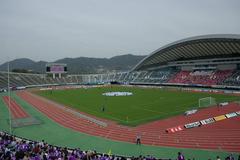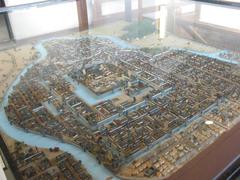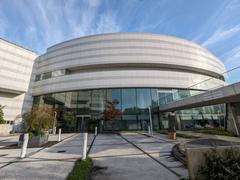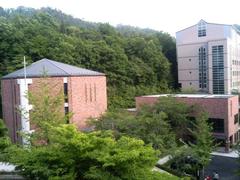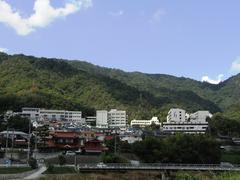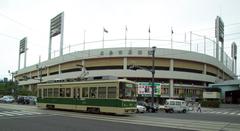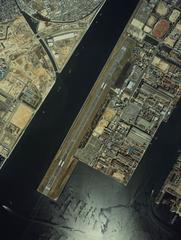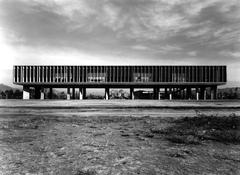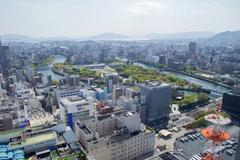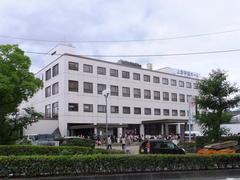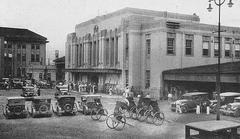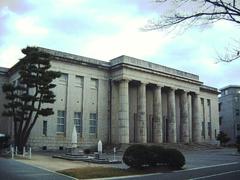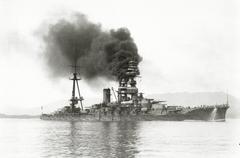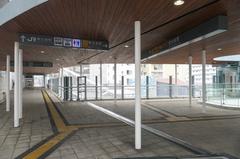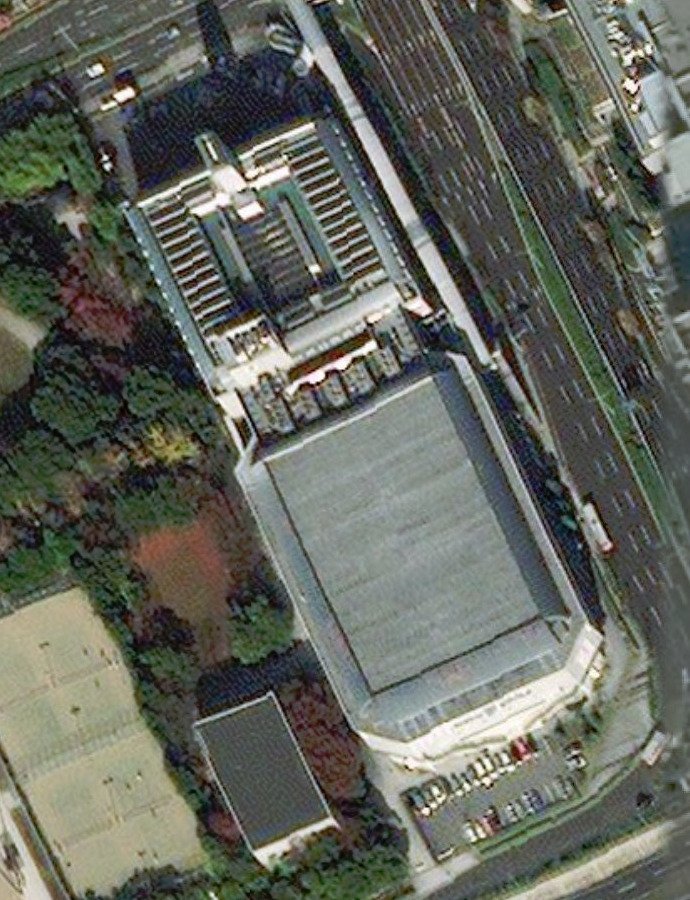
Hiroshima Sun Plaza Visiting Hours, Tickets, and Travel Guide
Date: 14/06/2025
Introduction
Hiroshima Sun Plaza is a landmark multi-purpose arena and convention complex in Nishi-ku, Hiroshima City. Since opening in 1985, it has become a pillar of Hiroshima’s cultural, sporting, and community life, reflecting the city’s post-war recovery, commitment to peace, and international exchange. The venue is renowned for hosting concerts, sports events, conferences, and traditional ceremonies, and is easily accessible via Shin-Inokuchi and Shoko Center-iriguchi stations. Its modern architecture and versatile facilities make it an essential stop for visitors interested in Hiroshima’s dynamic blend of history and contemporary culture (City of Hiroshima; Wikipedia; Dive Hiroshima).
Table of Contents
- Overview: Sun Plaza’s Role in Hiroshima
- Historical Context: Hiroshima’s Urban Evolution
- Hiroshima Sun Plaza: Facilities and Access
- Visitor Information: Hours, Tickets, and Amenities
- Major Events and Community Impact
- Cultural Significance and Peace Movement
- Nearby Attractions and Travel Tips
- Visuals & Media Recommendations
- Internal and External Links
- Conclusion and Final Tips
Overview: Sun Plaza’s Role in Hiroshima
As a multi-purpose arena with a seating capacity of over 6,000, Hiroshima Sun Plaza plays a central role in the city’s cultural fabric. The venue supports everything from international music acts and sports tournaments to civic ceremonies like the annual Seijin Shiki (Coming-of-Age Ceremony). Its strategic location and accessibility make it a focal point for both locals and visitors, while its proximity to major historical sites such as Hiroshima Peace Memorial Park and Hiroshima Castle enriches any visit.
Historical Context: Hiroshima’s Urban Evolution
From Castle Town to Modern Metropolis
Hiroshima’s rise from a strategic castle town in the late 16th century to a modern metropolis was shaped by successive rulers and infrastructure projects, including land reclamation and commercial expansion in the Edo period (Japan Society). The Meiji Restoration accelerated industrialization and urban growth, turning Hiroshima into a major transport and military hub.
Catastrophe and Reconstruction
The atomic bombing of 1945 devastated the city, but Hiroshima’s citizens initiated a determined reconstruction. The Hiroshima Peace Memorial City Construction Law (1949) enabled rapid redevelopment, with a renewed focus on peace, inclusivity, and urban renewal (City of Hiroshima). Hiroshima Sun Plaza emerged as part of these efforts, symbolizing the city’s resilience and new identity as a “Peace Memorial City.”
Hiroshima Sun Plaza: Facilities and Access
Location and Accessibility
Situated in Nishi-ku, the Sun Plaza is directly accessible via Shin-Inokuchi Station (JR Sanyo Line) and Shoko Center-iriguchi Station (Hiroshima Electric Railway), making it convenient for visitors arriving by train or streetcar (Mapcarta). The area’s redevelopment since the 1980s has integrated the venue into Hiroshima’s commercial and residential landscape.
Architectural and Functional Highlights
- Main Hall: Seats 6,052, adaptable for concerts, sports, and ceremonies (Wikipedia).
- Conference & Banquet Rooms: Multiple rooms with modern AV, ideal for business and community events.
- Barrier-Free Design: Ramps, elevators, accessible restrooms, and a dedicated barrier-free guest room.
- On-Site Amenities: Gift shop, vending machines, and a selection of Japanese-style lodging.
- Connectivity: Complimentary Wi-Fi, multilingual signage, and well-trained staff.
Parking and Public Transport
Limited on-site parking is available for cars, buses, and bicycles, but public transit is recommended, especially during large events (Japan Travel Navitime).
Visitor Information: Hours, Tickets, and Amenities
Opening Hours
- General Hours: 9:00 AM – 9:00 PM daily; hours may vary based on events.
- Event Times: Always check the official Hiroshima Sun Plaza website for up-to-date schedules.
Tickets
- Purchase: Online via the official website, authorized vendors, or at the box office.
- Pricing: Varies by event (concerts, sports, exhibitions). Major acts and popular events sell out early (Japan Concert Tickets).
Accessibility
- Barrier-free access throughout the venue.
- Multilingual staff and signage.
- Accessible restrooms and facilities for guests with disabilities.
Accommodation
- Japanese-Style Rooms: Authentic tatami experience.
- Barrier-Free Room: For guests with mobility challenges.
- Nearby Hotels: Range from budget to mid-range.
Dining
- On-site catering for events and banquets.
- Cafés and local eateries nearby, offering Hiroshima specialties like okonomiyaki and seafood (The Invisible Tourist).
Major Events and Community Impact
Concerts and Performances
Sun Plaza is a top venue for both Japanese and international music acts, with upcoming highlights including Sting (September 19, 2025) (Japan Concert Tickets). The hall’s acoustics and flexible configurations make it a preferred location for a wide range of genres.
Sports and Entertainment
The arena hosts regional and national tournaments in sports like basketball, volleyball, martial arts, and gymnastics. It is also a featured stop on Japan’s professional wrestling circuit, with events by NJPW, including a notable show on April 26, 2025 (NJPW Global).
Community Ceremonies
The annual Seijin Shiki (Coming-of-Age Ceremony) is a highlight, gathering thousands to celebrate young adults’ transition to adulthood (Wikiwand). The venue also hosts business expos, symposiums, and banquets, supporting both civic and commercial activities.
Cultural Festivals and Peace Events
Sun Plaza contributes to Hiroshima’s vibrant festival calendar, often hosting performances and exhibitions coinciding with citywide events such as Dreamination (Nomadic Matt; The Invisible Tourist).
Cultural Significance and Peace Movement
Sun Plaza was conceived as part of Hiroshima’s post-war urban regeneration, designed to promote social cohesion, peace education, and international dialogue (World Bank). The venue has hosted global peace conferences, G7-related events, and international cultural exchanges, reinforcing Hiroshima’s status as a city of reconciliation and renewal (Hiroshima Prefecture).
Its role as an emergency shelter during disasters and as a base for youth and educational programs further cements its place in Hiroshima’s social infrastructure and peace movement.
Nearby Attractions and Travel Tips
- Hiroshima Peace Memorial Park & Museum: Learn about Hiroshima’s history and peace message (Bucketlistly).
- Atomic Bomb Dome: UNESCO World Heritage site.
- Hiroshima Castle: Historic landmark.
- Hondori Shopping Street: Covered shopping and dining, ideal even during the rainy season (Agate Travel).
- Miyajima Island: Famous for Itsukushima Shrine and natural beauty.
Travel Tips:
- Rainy Season: June sees frequent rain; bring umbrellas or raincoats (Weather25).
- Advance Booking: Essential for event tickets and accommodation during peak times.
- Public Transport: Recommended over driving due to limited event parking.
- Cultural Etiquette: Remove shoes in tatami rooms and be respectful during ceremonies.
Visuals & Media Recommendations
For a preview of the facilities, see high-quality images and virtual tours on the official Hiroshima Sun Plaza website. Including descriptive alt tags with photos can enhance the online experience.
Frequently Asked Questions (FAQ)
Q: What are Hiroshima Sun Plaza’s visiting hours?
A: Generally 9:00 AM – 9:00 PM; confirm on the official website for event-specific times.
Q: How do I buy tickets?
A: Purchase via the official website, authorized vendors, or at the venue box office.
Q: Is the facility accessible?
A: Yes, with ramps, elevators, accessible restrooms, and barrier-free accommodations.
Q: Are guided tours available?
A: Not regularly, but special tours may be arranged during certain events. The concierge can provide advice.
Q: Is parking available?
A: Limited on-site parking; public transport is advised.
Internal and External Links
Conclusion and Final Tips
Hiroshima Sun Plaza stands as a testament to the city’s resilience, peace, and vibrant cultural life. Its diverse facilities, accessible design, and commitment to community engagement make it a must-visit for anyone exploring Hiroshima. For the best experience, check event schedules in advance, use public transport, and consider combining your visit with nearby historical sites for a comprehensive journey through Hiroshima’s past and present.
Stay informed by visiting the official website, downloading the Audiala app, and following related social media channels for updates and travel inspiration.
Sources
- City of Hiroshima. (City of Hiroshima)
- Wikipedia. (Wikipedia)
- Dive Hiroshima. (Dive Hiroshima)
- Japan Concert Tickets. (Japan Concert Tickets)
- Hiroshima Prefecture. (Hiroshima Prefecture)
- Wikiwand. (Wikiwand)
- World Bank. (World Bank)
- Travellers Worldwide. (Travellers Worldwide)
- The Invisible Tourist. (The Invisible Tourist)
- Nomadic Matt. (Nomadic Matt)
- NJPW Global. (NJPW Global)
- Japan Society. (Japan Society)
- Mapcarta. (Mapcarta)
- Weather25. (Weather25)
- Agate Travel. (Agate Travel)
- Bucketlistly. (Bucketlistly)
- Japan Travel Navitime. (Japan Travel Navitime)
